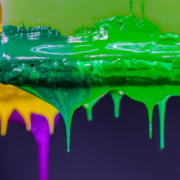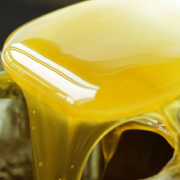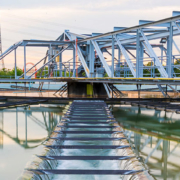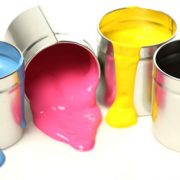Plastisols are compounds made with PVC resin, a plasticiser replacing Dioctyl Phthalate which provides flexibility and durability, and other additives such as calcium carbonate, epoxidised oil, stabilisers, colourants, etcetera.
Also known as PVC pastes, plastisols maintain a liquid state with visco-elastic properties when at room temperature. However, when subjected to temperatures above 43ºC, plastisol viscosity increases and, when reaching temperatures of over 160ºC, it can change from a liquid to a solid state after cooling as a result of process known as gelation.






